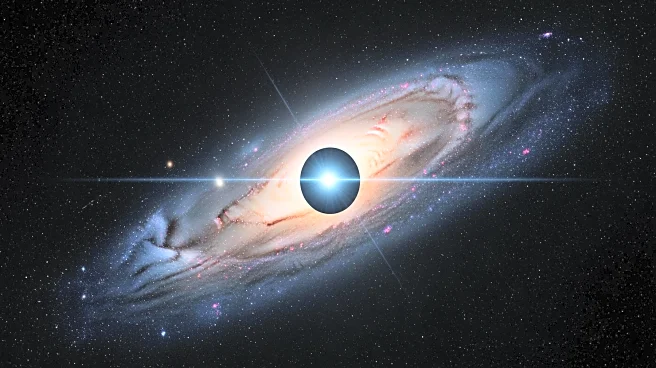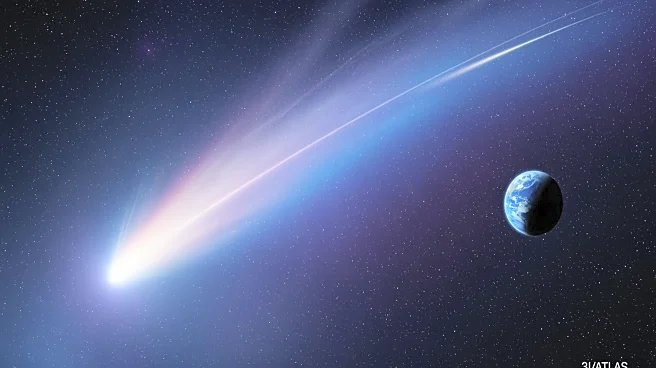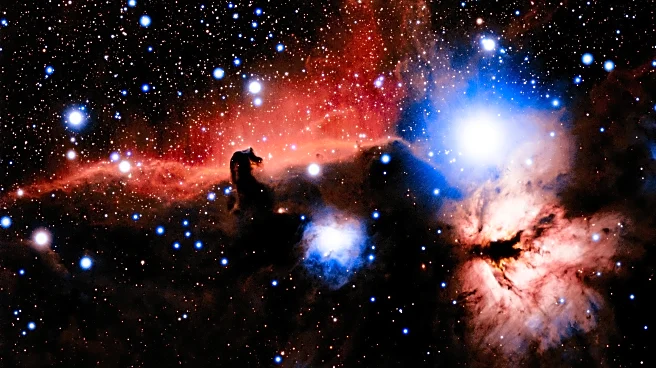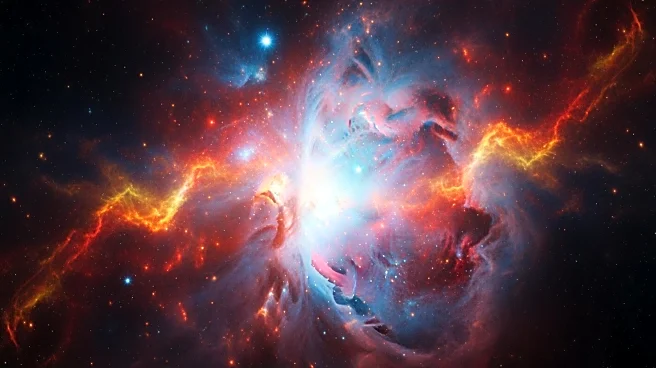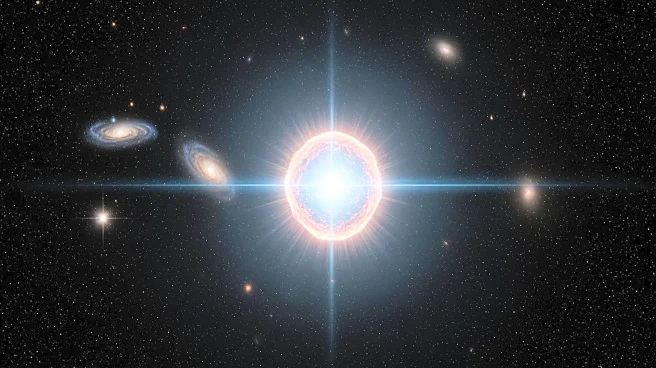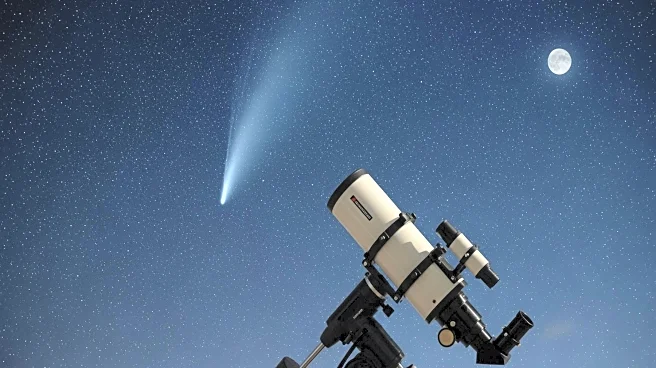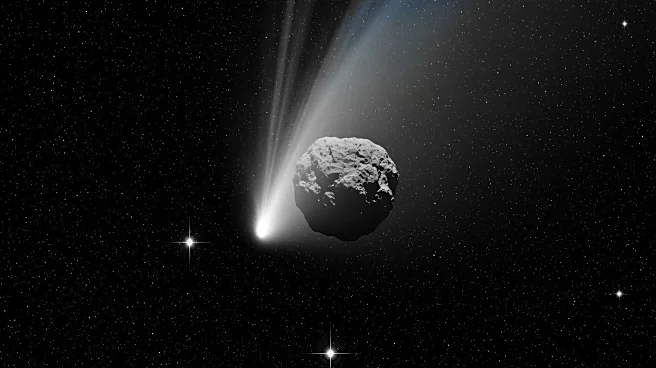What's Happening?
A supermassive black hole has produced a cosmic outburst with the light equivalent to 10 trillion suns, marking the largest and most distant black hole flare ever recorded. Detected from 10 billion light-years
away, this phenomenon was observed by a team led by Matthew Graham, a research professor of astronomy at the California Institute of Technology. The flare, first detected in 2018, was initially noted as a bright object during a sky survey using ground-based telescopes. Follow-up observations in 2023 revealed its extraordinary distance and energy output, prompting further investigation. The flare's intensity is attributed to the massive size of the involved cosmic objects, with the star being at least 30 times the mass of the sun and the black hole estimated to be 500 million times as massive. The event has been ongoing for over seven years and continues to be observable.
Why It's Important?
This discovery provides significant insights into the behavior and evolution of supermassive black holes, challenging previous notions of their environments. Traditionally viewed as static entities at the center of galaxies, this flare suggests a more dynamic and complex interaction with surrounding matter. Understanding such phenomena can enhance scientific knowledge of cosmic events and the fundamental forces governing them. The rarity and scale of this flare offer a unique opportunity to study the mechanisms of black hole activity, potentially influencing future astronomical research and theories about the universe's structure.
What's Next?
Further studies are planned to confirm the findings and explore the mechanisms behind the star's demise. Researchers aim to understand the dynamics that led to the star's close encounter with the black hole, possibly involving cosmic collisions that altered its orbit. Continued observation of the flare will help refine models of black hole behavior and contribute to broader astrophysical research. The flare's gradual fading will allow scientists to monitor its evolution and gather more data on such rare cosmic events.
Beyond the Headlines
The implications of this discovery extend to the broader understanding of cosmic phenomena and the forces at play in the universe. It challenges existing models of black hole environments and suggests a need for revised theories that account for dynamic interactions. The event also highlights the importance of long-term astronomical surveys and the potential for unexpected findings that can reshape scientific perspectives.
